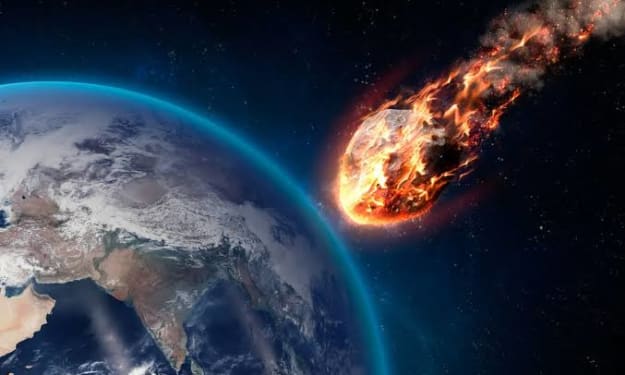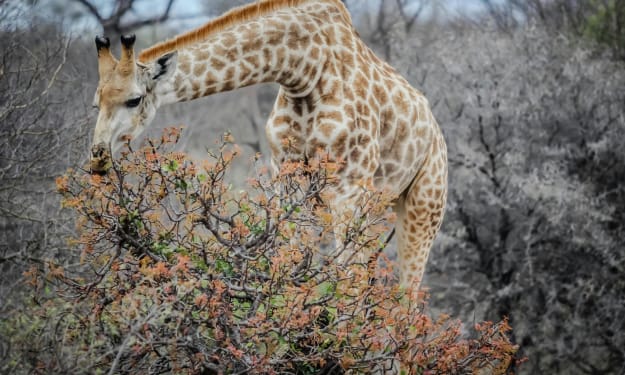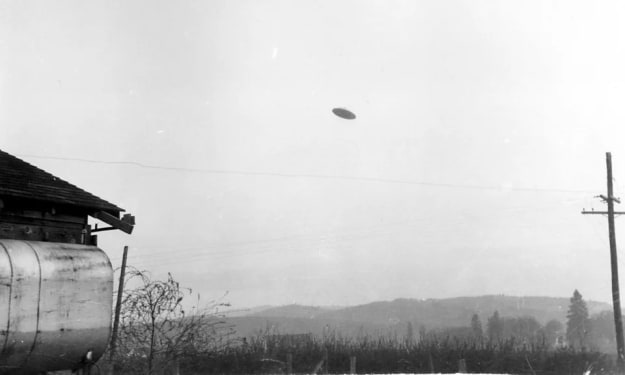Content warning
This story may contain sensitive material or discuss topics that some readers may find distressing. Reader discretion is advised. The views and opinions expressed in this story are those of the author and do not necessarily reflect the official policy or position of Vocal.
12 Cataclysms That Could End Humanity: A Gripping Look at Our Existential Threats
A Gripping Look At Our Existential Threats

Earth has confronted a huge number of dangers, from gigantic space rocks to undetectable infections, each driving us to the edge of our reality. However, mankind has consistently figured out how to paw its direction back from the cliff. While the probability of one of these situations clearing out life on our Blue Marble perpetually is critical, the last universal conflict happened in 1939. With worldwide strains rising and clashes emitting, it's questionable whether we are wavering on the edge of another universal conflict. The likelihood of such a contention increments day to day, energized by cutting edge military innovations, normal asset questions, and the unfavorable presence of atomic weapons. Potential milestones incorporate the US, Russia, and Taiwan.
To make due, individuals ought to consider staying away from significant urban communities, going to provincial regions, and setting up endurance packs. Maybe in any event, moving to a place of refuge in the far north or south, similar to Greenland, New Zealand, or Antarctica. This expects a regular conflict, with conventional battle. A full scale atomic end times, nonetheless, could kill millions without finishing the world through and through. Superpowers like the US and Russia could set off a 300-kiloton bomb impact, disintegrating everything in its range. Various blasts could make a colossal fireball as sweltering as the sun's center. The thick dark carbon smoke would spread across the Northern Side of the equator, freezing the Earth and causing an atomic winter enduring as long as a decade. This could influence 90.9% of the US populace. Europe, Russia, and China could confront starvation assuming that they endure the underlying atomic impact. To persevere, one ought to look for cover inside for as long as about fourteen days, concealing in thick concrete or underground.
In the event that mankind doesn't wind up crushing itself on The planet, there may be another chance: outsider attack. This could be driven by a voracious longing for something people can't get enough of, similar to the idea that outsiders exist. It's essential to contemplate whether these extraterrestrials are out there and how to get away from the cruel atomic winter. The Drake Condition gauges a 53 to 99.6% possibility that people are the main shrewd life in the Smooth Manner. On the off chance that outsiders are out there, they could utilize progressed rockets or travel through wormholes. A Sort 2 outsider human progress could have a Dyson Circle, a design enclosing their planet, reaping sun based energy, and searching for new sources like our sun. On the off chance that the sun works out positively, humankind would stick to trust, harvests would fail to exist, and our once Blue Marble would turn into an infertile no man's land.
Then there's the expected fiasco of a supervolcano. The text cautions that a supervolcano could clear out 75% of Earth's species, as it did a long period of time prior. The supervolcano tore North America from Africa and made the Atlantic Sea. It halted with a solitary huge emission, yet for a long period of time, the Focal Atlantic Magmatic Territory ejected over and over, covering everything in magma and pouring volcanic debris. Staying away from seaside regions and supervolcanoes could assist with alleviating these dangers.
Contamination, CO2, and carbon levels have caused critical natural annihilation. There's a monstrous ejection preparing underneath Yellowstone Park's surface, a monster caldera. In spite of the fact that it's probably not going to emit soon, a rehash of the 200-million-year-old occasion could occur in the far off future. Geologists are observing Earth for seismic movement, however the chance of a zombie end times stays a worry. The cordyceps organism zombifies bugs and might actually influence people. Researchers recommend our internal heat level is excessively high for parasites to get by, however in the event that a growth were to assume control over our frameworks, urban communities like New York, London, and Hong Kong would be the primary significant targets. Because of the spread of spores, staying away from infection would be troublesome. Zombies would gradually assume control over major metropolitan regions, while provincial regions may be more secure.
As the world keeps on transforming, it's urgent to get ready for the following pandemic. In the next few decades, the probability of an original sickness flare-up will increment fundamentally because of populace development, changes in food frameworks, and closer contact among people and creatures. Researchers foresee another pandemic will hit us inside the following 59 years, with another infection possibly being more hazardous, transforming quicker, or not being created as fast as the Coronavirus antibody. While bioengineering has made mRNA immunizations, manufactured science in a mysterious lab might actually clear us out. A potential prophetically catastrophic situation could include the formation of a quiet, lethal infection or super microorganisms that could destroy humankind. This infection could spread rapidly and contaminate more individuals, possibly clearing out humankind except if it is distinguished in time.
The next catastrophic scenario could be devastating climate change, with a 4°C temperature rise turning Earth into a giant sauna! Cities like New York, London, and Venice might become modern-day Atlantises by 2100 with sea levels rising up to a meter. Imagine extreme flooding, a food production nosedive, and coral reefs bidding us adieu. Earth's population could plummet to 1 billion, and oceanic anoxia might make a dramatic comeback, just like in the ancient days when it wiped out 85% of marine species. While we might still have oxygen, we're on the brink of a climate collapse—like living in a disaster movie, minus the popcorn and special effects!
During the Permian-Triassic period, sound environments depended on adjusted collaborations among creatures and plants, with every species assuming a basic part. Assuming that all species in a biological system vanish, it implies the primary domino's fall, causing the impending breakdown of our reality. This deficiency of biodiversity, as seen today, is the start of the end. Without honey bees, our organic product creation would be altogether decreased, and people would be less solid.
Robots, even the deadliest, are the probably going to kill every one of us. Huge scope an unnatural weather change influences are supposed to be felt in a couple of years, however computer based intelligence is becoming more brilliant than people, possibly prompting a hazardous place of peculiarity where simulated intelligence outperforms human knowledge. This could bring about humankind being subjugated by computer based intelligence or cleared out by one customized to kill us. The chance of a hyper-high level progress rather than a wiped out mankind is conceivable.
In the end, whether it’s asteroids, aliens, supervolcanoes, climate change, or AI, it’s clear we’ve got a lot on our plate. So, why not take a moment to enjoy the little things while we can? Hug your loved ones, plant a tree, and maybe even learn how to make a mean survivalist stew. After all, the apocalypse might be coming, but that doesn’t mean we can’t face it with a smile—and a well-stocked bunker with Wi-Fi and snacks. Just think of it as preparing for the world's most extreme camping trip. Grab your marshmallows, folks, because we might just be roasting them over a supervolcano!
About the Creator
Enjoyed the story? Support the Creator.
Subscribe for free to receive all their stories in your feed. You could also pledge your support or give them a one-off tip, letting them know you appreciate their work.





Comments
There are no comments for this story
Be the first to respond and start the conversation.